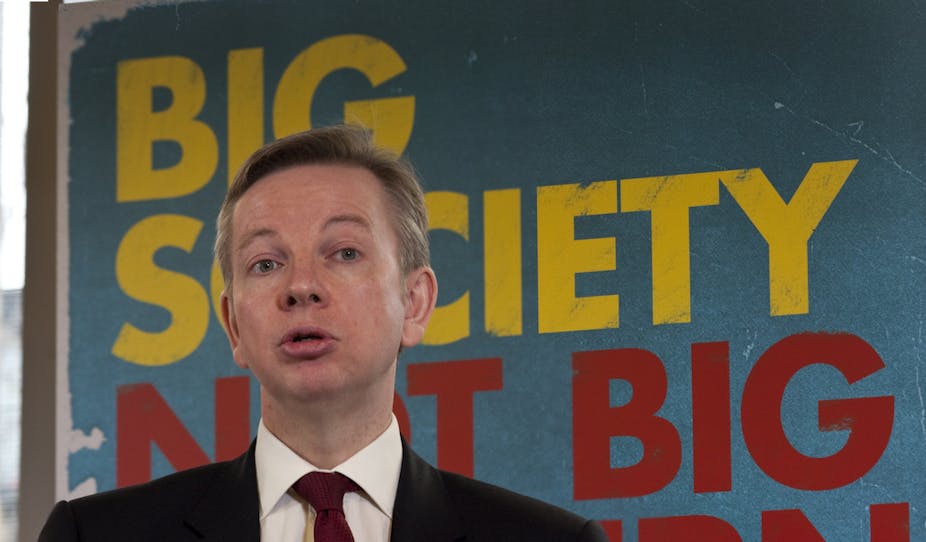As we hear more about looming federal public sector spending cuts and budget deficits, Australian governments seek new ways to meet diverse and growing human service needs. The challenges of an ageing population and a declining tax base combined with rising levels of disability in the community present an apparent perfect fiscal storm.
Ministers, from Health to Treasury, repeat the mantra that government must radically adjust its spending priorities. In short, we are told we need to search continually for new ways of organising governance.
The problem is this: how to make state and local government services more effective and efficient. In particular, the role of social enterprise is a cause for ongoing debate.
The big opportunity on the horizon for social enterprise development in Australia may be the National Disability Insurance Scheme (NDIS).
Turning to third-sector services
As in many other countries, governments in Australia have rolled back direct service provision. Beginning with the Hawke government and culminating in the Howard government’s privatisation of employment services, Australia has outsourced many activities through a long-running, largely bipartisan, reform process.
In its place, the third sector – non-profits, charities, social enterprises and so on – has often become the frontline for service delivery. The sector has also been encouraged to take up the slack by government.
Increasingly, social enterprise has been placed at the heart of social innovation and change to meet the needs of citizens. In Europe, for example, social enterprises play many different roles in everyday life. Looking at public service delivery, the UK has tried to engage social enterprises and the public through the Big Society.
Yet some recent media coverage illustrates the problem of achieving effectiveness and efficiency through social enterprise.
What do we mean when we talk about social enterprise? Is it a business, a charity, a non-profit, all or none of them?
There is no easy answer to this. As others have argued, there are many different types of social enterprise. Also, there is still some debate about a precise definition, which often adds to the confusion.
Balancing social and business goals
Simply, social enterprises create social benefit through trading, so they “do good” using business methods. If they make a surplus, they reinvest that money back into their social mission and key communities.
As a February article in The Guardian argues, making the most out of social enterprise might depend on the balance between the “social” and the “business”. This is important, because much of what social enterprises do centres on social missions.
For example, look at how central farmers and communities are for fair trade confectioner Divine Chocolate. For social enterprises like Divine, the social values are what make them a viable business. It just so happens that they are also, after much striving, a rather good business too.
From a government view, social enterprises in the public sector appear to make a lot of sense. Since social enterprises trade products and services to help raise funds, there is less burden on the public purse to support them over time.
Another benefit is that, unlike traditional public services, social enterprises can be more entrepreneurial. This is critical to their appeal, because this enables them to respond flexibly and more quickly to needs.
The concern is that to compete effectively in newly formed or privatised markets, social enterprises face significant challenges. They need to be able to serve their social or environmental mission. That’s the priority.
In some markets, corporate competitors are better resourced and more experienced at tendering for public sector procurement.
And importantly, social enterprises aren’t like normal corporate businesses. The entire point is that they are different by being social. The social values are what make them unique, and offer something of real value to the communities they serve.
This makes the recent commentary on social versus business necessary. Overcoming barriers is critical in getting social enterprises to develop more sustainably in our communities.
As part of this, the federal Coalition toyed with following the Big Society model. The clamour for increasing participation in public services resulted in a push for increasing social procurement in Australia. This means more demand for organisations that can deliver the social impact needed, in a timely and efficient way.
However, a May 2012 publication by the Centre for Policy Development looked at the broader issue of transferring the Big Society idea into Australian welfare systems. They argued that the Big Society’s loud rhetoric and post-election ubiquity masked the very real problems brought on by the global financial crisis and the government’s response to that crisis.
Also, evidence suggests that Big Society is not working quite as well as hoped.

The NDIS test for social enterprise
So what does this mean for government and social enterprise in Australia?
As the NDIS begins rolling out, how can social enterprise offer something different to existing providers?
The NDIS is all about creating a holistic support system for communities, families and individuals. Making this a success would require supporting all providers who focus on social benefit (that is, effectiveness) first. If this is the only criterion, then existing non-profits and charities are as well placed as social enterprises.
The ability to operate efficiently creates a different dilemma. How to run the social enterprise so it financially supports itself? How much emphasis will be placed on “business acumen” in social procurement tendering? This opens up the possibility of “corporate creep” in how NDIS providers run their services.
The most important issue seems to be supporting social enterprises to quickly develop presence in our communities. To do that, they need to develop valuable relationships that enable their businesses to survive and grow.
The mutual dependence of social and business does create tensions. But with the right environment and support, third sector organisations might work together to strike the balance between effectiveness and efficiency.
And, as with not putting the cart before the horse, the “social” should remain the driver of the “business”.

